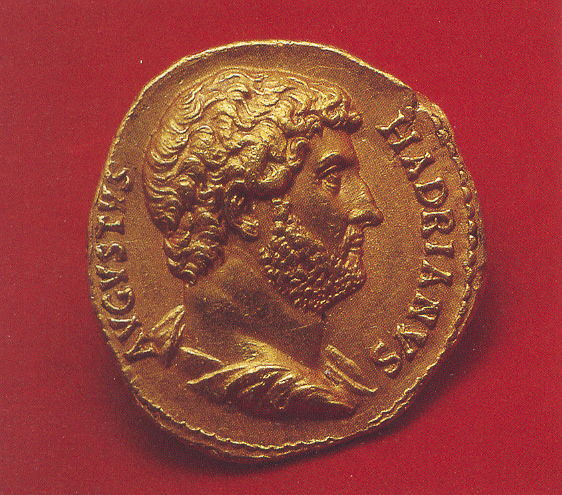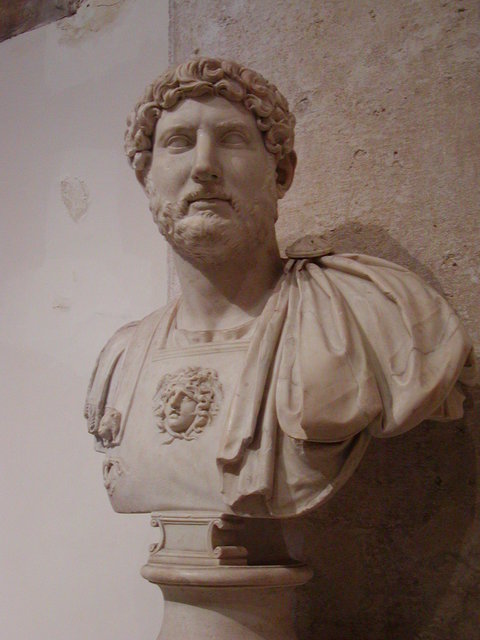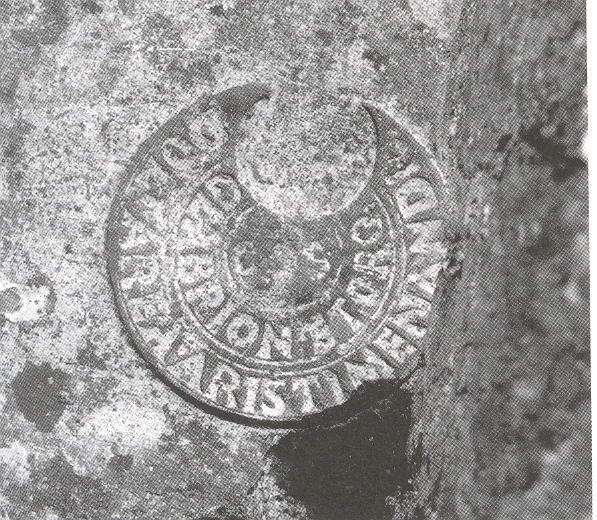
The Man Behind the Villa
"Ah fleeting Spirit! wand'ring Fire, That long hast warm'd my tender Breast, Must thou no more this Frame inspire?"
-Publius Aelius Hadrianus
Hadrian (Publius Aelius Hadrianus), the seventh of Vespasian's reign, was born on January 24th of the year 76, probably in Italica or modern-day Seville. Hadrian was taken under the wing of his uncle, Trajan, after the death of his father. Hadrian would maintain a close relationship with the emperor and start a successful military career. He excelled in the use of weapons and planning military operations. At forty-two years old, he became emperor at Antioch on the 11th of August of 117, after Trajan's death. His ascension to the throne would be controversial since he gain the throne in large part by the support that Plotina, Trajan's wife, gave who was rumored to be his lover. Also, the assassination of four military leaders who were close to Trajan and possible successors after Trajan's death, did nothing to quell the controversy of his rise to power (3). He also had to make a compromise with the Senate to increase the number of legions in order to maintain control of the army, which was closely tied to Trajan (6).

Coin depicting Hadrian the emperor
Image from: MacDonald, William Lloyd and Pinto, John A. "Hadrian's villa and its legacy"
During his reign, Hadrian paid attention to the security at the frontier of the empire and the army's readiness instead of continuing Trajan's plans for eastern conquest. He consolidated the Empire's borders starting by the reorganization of the army and construction of new defenses in the Danube and the Rhine region. In Britain, he erected the famous Hadrian's wall in Scotland. He made alliances with some regions and withdrew from several areas, like Armenia, Mesopotamia and Assyria. His only big confrontation was inn Judea where he extinguish a revolt through bloodshed and other hardliner tactics like stripping the autonomy of the region (4).

Sculpture of Hadrian
Image from: MacDonald, William Lloyd and Pinto, John A. "Hadrian's villa and its legacy"
He traveled around the empire for most of his reign, specially the Greek speaking East of which he was fluent in Greek due to his election of Athens archon in 112 or 113. However, ever since his questionable rise to power, Hadrian was an unpopular rule which might explain his constant travels away from Rome. Moreover, the death of his wife and the subsequent accusation that he killed her stresses far in the disfavor of the people he had fallen, especially in the latter years of his reign. He died alone in Baia in 138 AD at the age of sixty-two, appointing Antoninus Pius as his successor (6).

Sample brick engrave in Hadrian's Villa
Image from: MacDonald, William Lloyd and Pinto, John A. "Hadrian's villa and its legacy"
In terms of his character, he was a complex and multifaceted person. Physically, sources describe him as tall, robust and elegant with fine hair and a beard. His military formation fed his courage, audacity, capacity to reach decisions under tough situations and, to some extent, his frugal lifestyle. He was well educated and possessed incredible intelligence and memory (6). He got himself interested in architecture. This is shown by his planned buildings with unusual designs, characterized by vaulted ceilings, evidenced in his Villa. Furthermore, Hadrian's Villa peculiar plan and its combination of curves and straight lines has led scholars to believe that Hadrian was an active part of the design of the Villa. The noticeable modifications in buildings through the Villa are taken as signs of changes ordered by Hadrian during construction rather than later modifications. Literary sources also point out that the direct involvement of Hadrian in the meticulous planning of the! Villa's decoration. Therefore, we can see how Hadrian's personality and interests are molded into the Villa as it was a very important project for the emperor (4).
FOOTNOTES:
(1) Morselli, Chiara, "Guide with Reconstructions of Villa Adriana and Villa d'Este", Roma: Vision s.r.l, 1995
(2) "Hadrian's Villa", Wikipedia, Wikimedia Foundation, Inc, 2006 <http://en.wikipedia.org/wiki/Hadrian's_Villa>
(3) Seindal, Rene "Hadrian's Villa. Luxurious imperial villa from the first century CE". 2004, 19 Oct 2004<http://sights.seindal.dk/sight/901_Hadrians_Villa.html>.
(4) MacDonald, William Lloyd and Pinto, John A. "Hadrian's villa and its legacy", New Haven : Yale University Press, 1995
(5) Franceschini, Marina De "Brief History of the Villa and of the excavations", Soprintendenza Archeologica del Lazio, 2005 <http://www.villa-adriana.net/>
(6) Adembri, Benedetta, "Hadrian's Villa", Martellago (Venice): Mondadori Electa S.p.A. , 2005